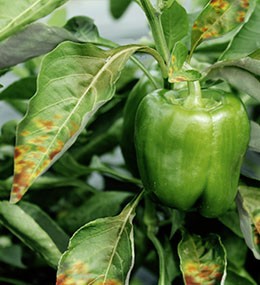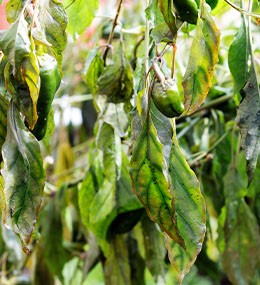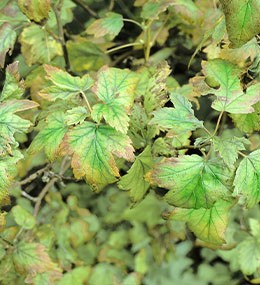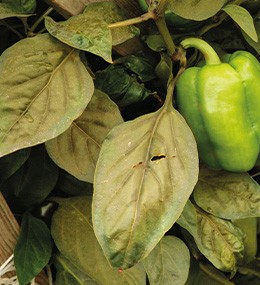Phosphorus deficiency
The first sign of a phosphorus deficiency is a sudden growth stagnation. If the deficiency continues, a dark discolouration occurs at the older leaves. These leaves can be found at the bottom of the plant. Some plant varieties may show pale yellow or dark-blue green old leaves instead. This is due to the accumulation of carbohydrates. These plant varieties will also end up with veins that are purple at the bottom. Additionally, you can recognise a lack of phosphorus underground: root development will decrease.
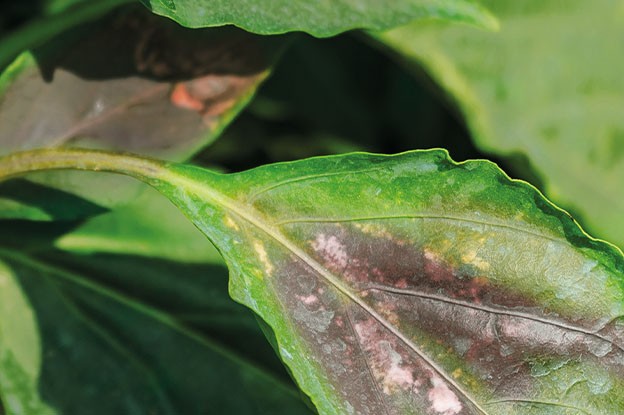
How do you recognise a phosphorus deficiency?
At first, a phosphorus deficiency will lead to a sudden growth stagnation.
Next, you'll notice a dark green discolouration of the lower, older leaves. Red or purple colours may also appear.
Root development will decrease.
Leaf extension is reduced. The same goes for leaf surface and the amount of leaves.
Shoot growth will decrease. Stalks become short and slender.
The plant is less resistant to diseases.
The quality of the yield is reduced.
What is the (possible) cause?
Low phosphorus concentration in the soil or substrate.
The substrate is too wet.
The pH value of the soil or substrate is too low.
The temperature in the soil or substrate is too low.
A lack of oxygen in the soil can reduce the absorption of phosphorus.
How can you prevent it?
Prevention is better than cure. Therefore, choose a phosphorus rich potting soil to allow your plant to grow. The soil temperature is also important: keep this around 21°C. Use one of our base nutrients (like Terra Grow and Terra Bloom) to reduce the likelihood of a deficiency. Also keep abiotic factors in mind. These include temperature, light intensity, acidity, amount of moisture and wind strength.
How can you cure it?
A fertiliser that contains a lot of phosphorus can help eliminate the deficiency. Bat manure like our Bat Guano are an excellent choice for this. You can also use a liquid fertiliser like Green Sensation or PK 13-14. Another option is to flush your grow system with clean,pH-controlled water. This lowers the pH and EC values.
What does phosphorus do for the plant?
Phosphorus is a macro nutrient. This means that plants need it in large quantities to grow and thrive. Additionally, phosphorus plays a central role in the photosynthetic process and in the breathing of the plant. These two processes ensure that the plant has enough energy. Fast-growing plants use large amounts of phosphorus to produce flowers and fruits during the flowering phase.
Not sure if you have a phosphorus deficiency?
Contact our Grow Experts via Servicedesk and ask for advise.
